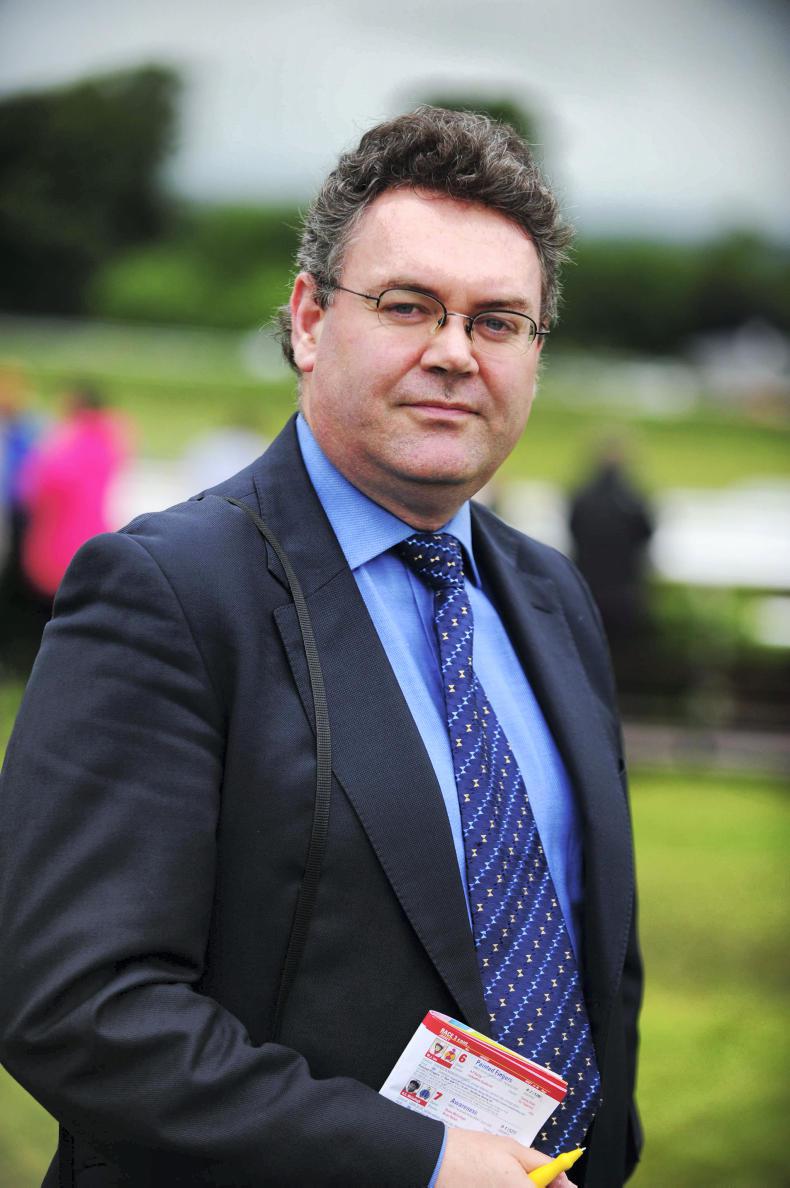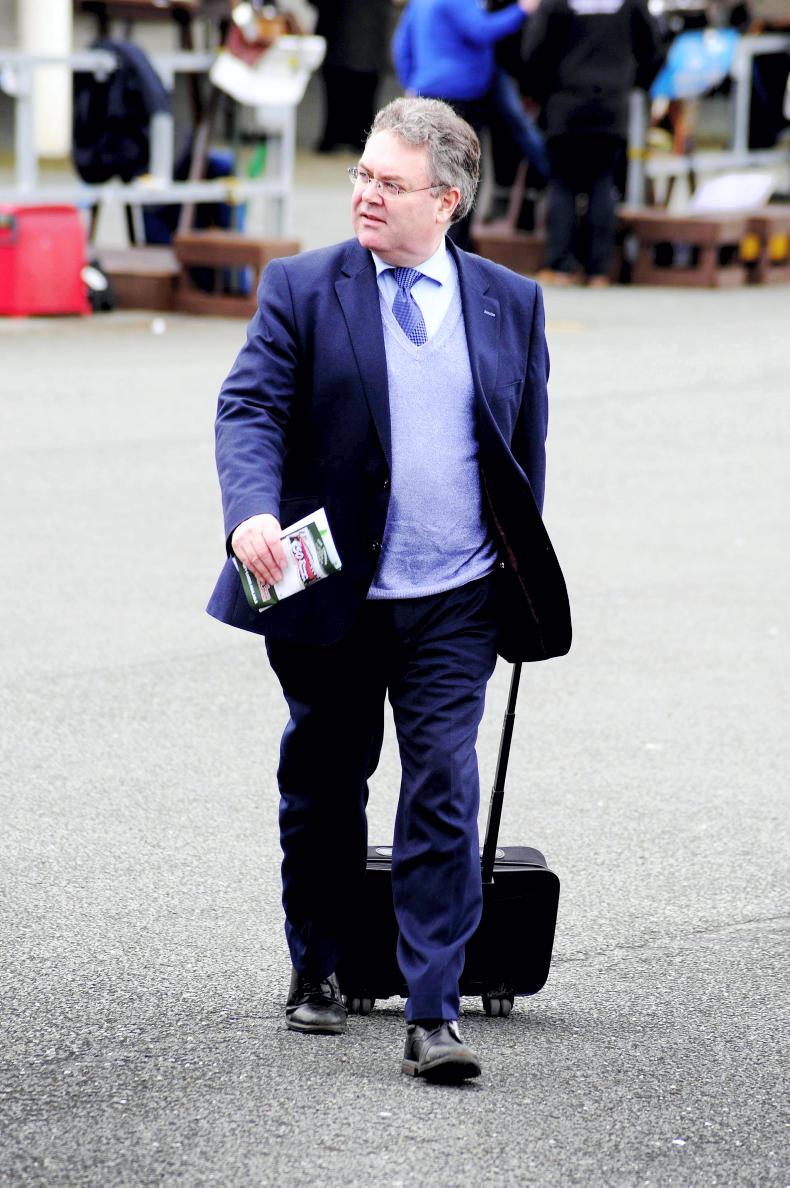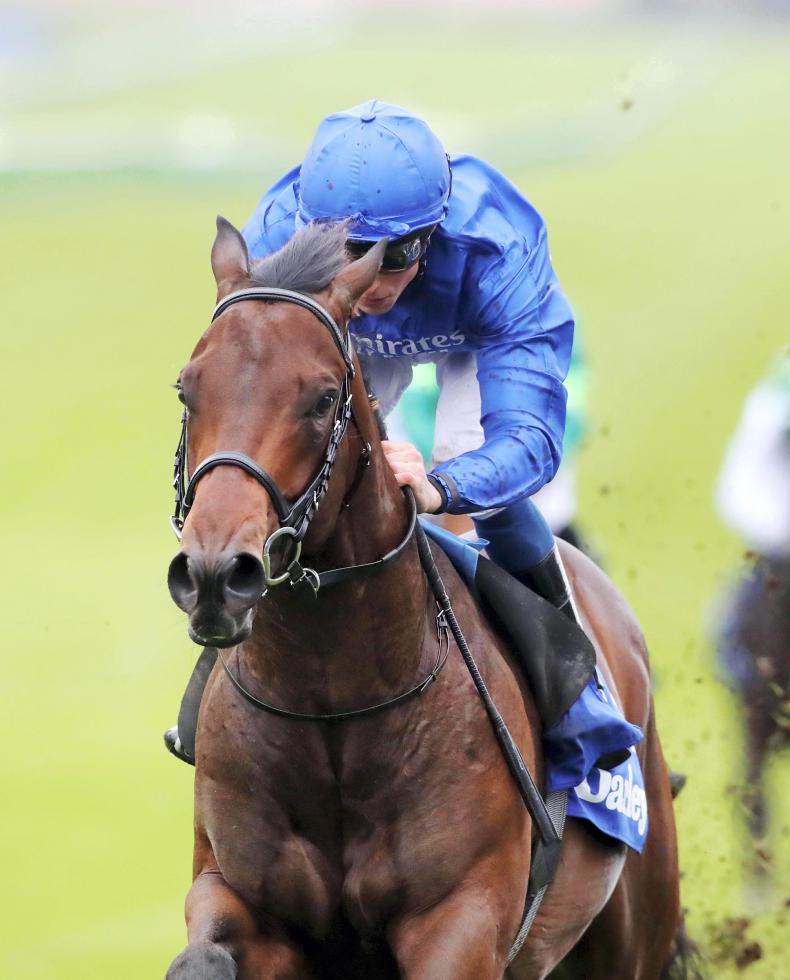THERE was €11.5 million in prize money available in handicap races on the flat in Ireland in 2019. That is 638 races with an average of €18,000 per race.
While giving evidence at the Chris Gordon - Irish Racehorse Trainers Association (IRTA) case at the High Court recently, the IRTA chief executive Michael Grassick said: “We have 350 trainers in our association and I would say there is about 20 or 30 of those making a good living out of it, I would say 85% of them are on the breadline.”
Going by Grassick’s estimations, it’s plausible to suggest that most of that 85% are going to make things pay in handicap races. Garry O’Gorman has been the Senior Flat handicapper for 18 years now and the above statistics form a significant part of his job motivation to this day.
“I wouldn’t say I feel pressure in the job,” he says. “I think it’s more of a responsibility. My colleague Mark Bird has done a great job collating those stats and it’s fairly stark when you look at them.
“So if you are looking for job motivation, that does concentrate the mind on how important the job is that you’re doing. It does motivate you to be as diligent as you can be in order to be fair to everybody. It’s not so much a pressure but a big responsibility and it’s one I very much enjoy.”
O’Gorman has been enjoying racing for most of his life, ever since his father took him to the Phoenix Park as a child. Living in Castleknock, racing was literally at his back door then and from there the seed was sown.
However, people that aren’t born into racing in a hands-on sense often find it difficult to see a career in the sport and he was no different. He went on to study law in Trinity College, where he managed the Racing Society, and then moved on to do a masters in law, passed the bar at Kings Inns and proceeded to practice as a barrister for over seven years. But his attachment to racing never faded.
Having initially failed to even get an interview for a National Hunt assistant handicapper position, three years later in early 1999 he successfully applied for a flat assistant handicapper position, to replace Dermot McDermott who was set to retire at the end of 1999.
It wasn’t exactly smooth sailing at the start given that the then Senior Handicapper Ciaran Kennelly had been headhunted to go to work for the Hong Kong Jockey Club, leaving O’Gorman “orphaned”, but the then Turf Club CEO Cahir O’Sullivan moved to persuade Geoffrey Gibbs, who was a retired BHA senior handicapper, to come in and steady the ship.
“I owe a lot to Geoffrey,” O’Gorman says. “He was kind enough to recommend me for the senior position when he retired, again, and he played a big part in my development.”
O’Gorman commenced his position as Senior Handicapper in 2002, the same year Mark Bird joined the team as assistant Flat Handicapper and the pair have been working together ever since. They form the flat team, while Andrew Shaw and Shay Quinn are the National Hunt handicapper team.
International
Since he began, O’Gorman has been part of the International Handicappers’ Committee on which he spent two three-year terms as co-Chairman from 2007 to 2013.
He has seen it change from what was once solely a vehicle for quality control for the European Pattern Committee’s function to upgrade or downgrade group races to now an illustrious Longines-sponsored worldwide classification of the best flat horses in the world.
O’Gorman explains: “The ratings are still very much used by different pattern racing committees around the world in order to promote and relegate group races but they also have the ancillary effect of stimulating debate, and sometimes controversy, encouraging interest in global racing by informing racing fans around the world as to how good the horses are in Australia and how they compare to horses in Japan, or horses in Ireland, or horses in Argentina.”
Given his position and experience, O’Gorman is in a good position to comment on the current situation and the significant headache flat racing has with regard to the pattern of group races.
“I am noting what is going on in America where there is a lack of an overall umbrella organisation, or an overall governing body running American racing,” he says. “So you can see that Churchill Downs have done a solo run and said ‘we’re having our Derby in September’ and they can do that because they don’t have to answer to a governing body.
“But now you have a scenario where the racecourses with races like the Travers and the Preakness now have to decide how they want to fit in – it’s a difficult dilemma for them.
“On this side of the pond, you have the European Pattern Committee (EPC), who are very strict in relation to when the best races are run in Ireland, England and France and so on and everything is very carefully choreographed in terms of time between races, ensuring there are no clashes between Group 1 races.
“The big question is over the three-year-old crop; you only get one chance to win a Guineas or a Derby. But there is a chance by the time we get back racing, we could well be beyond the dates for those races so then what do you do? Stick with the programme or do you just carry on from whatever date you land on?
“I think the EPC will have a very important function in deciding whether or not to reschedule everything and if they do, there will obviously be severe knock-on effects. If you suddenly have Newmarket and Epsom running their classics in July or August, how would Goodwood and York react to being usurped by the other courses deferring their races?
“My own view is there is a Group 1 race for every horse in every category more or less every month. It may well be that the best thing to do is leave the existing schedule as is with the possible exception of the three-year-old classic races.”

O’Gorman is proud to represent Ireland on the International Handicappers’ Committee. Proud of the quality of our flat racing that is well recognised around the world. He acknowledges the influx of foreign owners to have their horses in training in Ireland which is testament to our trainers.
He was disappointed with the criticism from some Irish media on the decision to race on for 10 days behind closed doors, recognising that while we may have been outliers in a European context, we were only practising the same policy as many other racing jurisdictions in Hong Kong ,Japan, Australia and America. He does, however, have one bugbear with Irish racing – the refusal to implement sectional timing as an everyday tool.
“I have been vocal about it in the past. It’s not my call and obviously there are financial implications but there is no doubt that sectional times would greatly enhance the process of handicapping by making both us and ardent punters more confident about the form.
“Besides that, I think sectional times would serve a purpose in terms of improving interest in horse racing in Ireland. They could energise the younger and more cerebral people to engage in racing. You only have to look at sports around the world and see how much data is provided for them now and speculate whether the growth in sports betting is related to that.
“We are not shy about asserting that we are one of the best racing nations in the world with the best trainers, best riders and best horses, and it’s true, but there are plenty of modest racing jurisdictions around the world that are not on our radar and they have sectional times. I think that does beg the question as to why we don’t have them.”
At domestic level, O’Gorman should be on the verge of his busiest time of the year, and hopefully will be soon. Mondays are busiest, when ratings for every horse that ran at the weekend are published.
In this day and age, it is possibly feasible for a handicapper to work from home completely but O’Gorman takes a leaf out of the book of the late and fondly-remembered National Hunt handicapper Noel O’Brien, who put huge emphasis on making himself available to talk to at the races.
“Certainly you could take the view that you could do the job from home, watching on television, but I am very happy to go racing,” he explains. “In terms of doing the job professionally and properly, I think it is really important to check out horses in the parade ring.
“If a horse has suddenly appeared to improve massively from two to three, were there signs in terms of its physical appearance in the parade ring to suggest that? In other words, the improvement is more plausible clearly if the horse was a backward two-year-old and has developed nicely.
“Also, by going racing, it’s great to be able to meet people person to person – we’d field a lot of enquiries by trainers at the racecourse. We’d like to think we are very approachable. I think handicapping has become much more transparent over the years. Ratings are publicly available on websites and so on.
“If someone rings us up or emails us we’ll tell them straight why their horse wasn’t handicapped or why they got their rating or why it was reassessed the way it was.”
Subjective
The subjective nature of handicapping will mean that O’Gorman and his colleagues will never please everybody, but he likes to think there is a good working relationship between the handicappers and trainers.
One issue that comes up a lot is the yearly downward revision of all Irish horses’ ratings under the blacktype level. The drop was usually 5lb on average and existed before O’Gorman took up his current position. The rationale for this was that a relatively small pool of horses running against each other in handicap company as a group got too high in the ratings relative to listed/group horses.
O’Gorman explains: “In recent years, rather than administer one drop at year’s end, we have done ‘interim drops’ throughout the year as and when our analysis of the median/mean levels suggest it is warranted.
“Maintaining median (or mean) levels as we do is very important to ensure consistency in handicap files as between the different generations of horses (three-year-olds taking on older horses, etc.) and also to ensure competitiveness between Irish and British horses running in handicaps in each other’s jurisdiction.” 
Research done by James Willoughby, when working as a BHA data analyst, indicated that the Irish system was a technically sound process, and actually suggested the British system would be well advised to follow suit in order to avoid competitive discrepancies between jurisdictions.
Like just about everyone else, O’Gorman is hoping things can get back to some kind of normal soon and racing can resume. While the Grand National would have been taking centre stage today, there also would have been Guineas trials at Leopardstown tomorrow and the flat season would be coming into focus. Even more so this year, with the brilliant champion juvenile Pinatubo and all of his stratospheric potential.
“I don’t think people are wrong to compare him to Frankel,”
O’Gorman says. “He was as impressive a two-year-old as Frankel, probably more so, but the history of racing is replete with brilliant two-year-olds who didn’t train on and improve at three and four, as Frankel did.
“It’s like a marathon race – at the five-mile mark, Pinatubo is ahead of Frankel, but whether he will be at the 26th mile, that is a huge mountain to climb. But isn’t it exciting to look forward to the prospect.”
It is indeed. Hopefully we find out sooner rather than later.
The handicapper’s guide: how to assess a race
Handicaps
EVERY horse has a rating beforehand and they will all be revised afterwards. Basically you’ll take a view on how easy the winner won, how much did he beat the second horse by and was the literal margin an accurate reflection of that superiority or was there more in hand. You have to decide then how best to equalise all their chances if they were to meet again.
You also have to look at the overall calibre of the race and see how strong a race it was – how many horses were running off their correct marks, were they in good recent form, was the surface and distance good for them, etc.
Some people have a theory that we always raise the second horse in a handicap. There is no preconceived agenda to that effect, we look at each and every handicap on its own merits and decide how strong was the race. If it was a strong race you might raise the first three or four and if it was a poor race, it might be sufficient to raise the winner only. You always look at the race on its own merit.
Maidens
TAKE a three-year-old maiden in September; you’ve had a lot of horses who have run in maidens all season and you’re confident at that stage of how good they are. But take a three-year-old maiden in the spring, you know what horses were as two-year-olds but you don’t know what they are as three-year-olds.

You have to have a very open mind in the latter scenario and be prepared to change your view of the race as the form pans out. It’s like a constantly evolving jigsaw puzzle.
Deadlines ensure we have to make up our minds very quickly about a race but in two weeks, four weeks or six weeks the landscape for the race might look very different, the form could have worked out very well or very badly.
You have to constantly go back and reassign ratings based on how things worked out.
You can’t be stubborn, you must be prepared to change your original assessment when it’s necessary.
